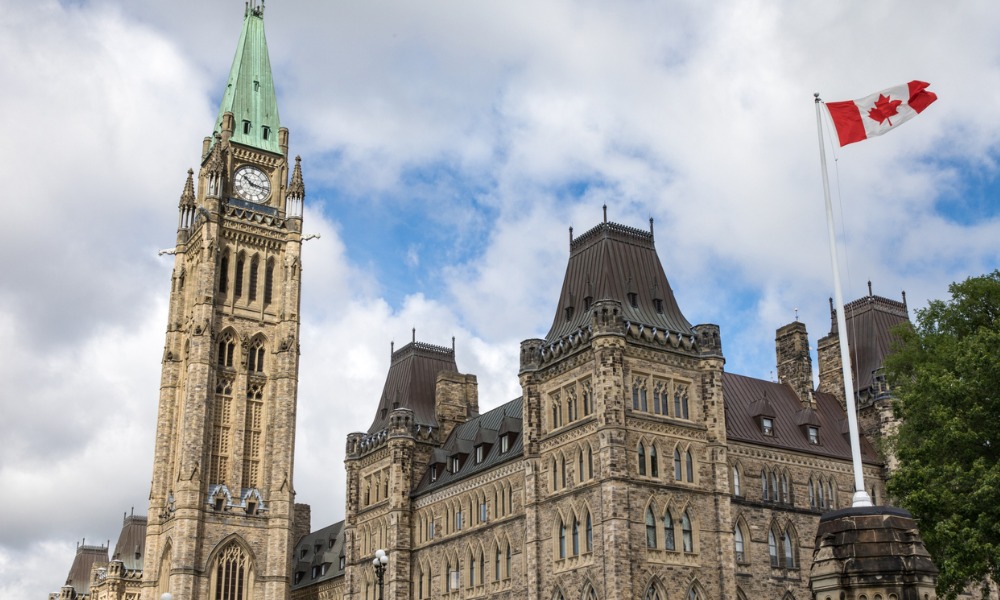'Sometimes employers are inclined to make exceptions for some people – and that's where you can get into legal risks,' says lawyer offering tips for HR

In today’s diverse and evolving workplaces, the balance between dress code policies and employee self-expression can raise complex legal and human rights issues.
To that end, a tiny rainbow sticker was at the centre of a recent Ontario Human Rights Tribunal (OHRT) case that helps make the line between discrimination and fair practice a little clearer.
“There are various ways employees wish to express [themselves] in the workplace, and there are also various ways that employees and workers self-express in a way that's tied to a Code-based identity,” says Shannon Sproule, employment lawyer at Turnpenny Milne in Toronto.
“So, it is very important for any organization and employer to know about this area of human rights, and also understand how to assess each request.”
Nametag sticker removal results in discrimination claim
The decision, Zanette v. Ottawa Chamber Music Society, saw a volunteer of the non-profit society allege discrimination based on sexual orientation, gender identity and gender expression according to the Human Rights Code.
While working at an event, the employee was asked by a supervisor to remove a rainbow sticker, a symbol of the LGBTQIA+ community, from his nametag.
The employee did eventually remove the sticker after exchanging emails with the general manager of the event, but later filed his complaint with the tribunal — and his claim was dismissed.
“I am not satisfied that the applicant experienced substantive discrimination,” the panel member wrote in his decision, explaining that the onus was on the employee to prove there was discrimination at play. “He has failed to do so.”
The rainbow sticker was not an “essential element’ of being a member of the LGBTQIA+ community, the tribunal decided, and therefore the request to remove the sticker from his nametag did not amount to discrimination.
The tribunal compared this case to a claim involving a piece of clothing or a practice necessary for a religious rite or other mandatory customs of a community — for example, in the recent Alberta case of a school that was found to be discriminatory when it prevented two students from using an empty room to pray in.
“There was no evidence that the wearing of a rainbow sticker was an essential element of being a member of the 2SLGBTQ2 community,” the panel member wrote. “As such, there is no evidence to establish prima facie discrimination based on sexual orientation, gender identity or gender expression.”
Dress code policy applied equally to all volunteers
The tribunal’s dismissal of the claim was largely due to the organization’s consistent application of the dress code. The fact that there was no evidence of any unequal adherence to the rules played a large part in the decision, says Sproule.
“One of the reasons the organization was successful in getting the application dismissed was that, based on the evidence, they were actually applying the rule fairly and across the board,” says Sproule.
“Sometimes employers, for whatever reason, are inclined to make exceptions for some people. And that's where you can get into legal risk. Whenever you have a rule, ensure that all of your staff, anyone responsible for implementing the rule and monitoring compliance with it, knows in a very clear way that they are not to make exceptions.”
Accommodation requests around dress code policies
When an employee does bring a request for an accommodation around a dress code policy, it must be dealt with on a case-by-case basis, and by someone who has thorough knowledge of the Human Rights Code and the protected grounds, says Sproule.
“It should be assessed appropriately. That's so key, because oftentimes with human rights cases, an issue arises because while there was a rule and a policy in place, the evidence is that it wasn't actually applied equally to everybody.”
Sproule also says that while employers have the legal right to implement dress codes, rigid rules can create legal risks if they are not connected to a bona fide requirement of the job.
“Dress codes are safest when tied to health and safety, but strict rules without such a justification can lead to legal trouble.”
Dress code accommodation requests never ‘trivial’
Although an employer may have the law on its side if it has clear dress code policies, that doesn’t mean they should be dismissive of such requests, says Sproule.
“You should still approach it in a way that recognizes that it's not trivial, and it's still connected to this individual's identity,” she says.
“In a case like this, while it might not be the law’s requirement, I think you could even go above as an organization and ask if there's any other way that you could help this worker or volunteer to feel celebrated in the workplace.”
Sproule emphasizes the need for HR professionals to consider whether their workplace is genuinely inclusive.
“As an organization, I would also ask, ‘Are we doing enough for individuals to ensure that they feel included?’ Maybe also asking those types of questions, like ‘Does this individual feel that in this organization, we are inclusive enough towards them?’ Are we celebrating Pride, for example,” she says.
“Because it might not necessarily be the law, but it is the reality of a diverse workplace, and you definitely want everyone to feel welcome and included.”




